Selecting your water quality instrument | 5 key questions
Selecting the right equipment for your application is one of the most important decisions you need to make for your monitoring program to ensure that your environmental data is accurate and reliable.
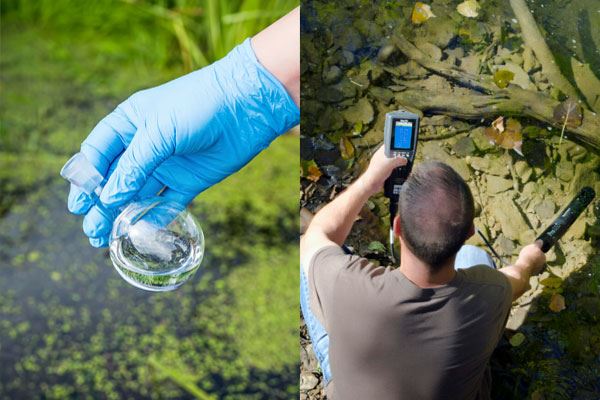
While collecting grab samples of water for laboratory analysis is a valuable method, it requires waiting up to several weeks for your data. In addition, it may not yield the most representative data for some water quality parameters that are best measured in the environment, such as pH, temperature, and dissolved oxygen.
Field instruments, on the other hand, are used in the field and often in the water—known as in situ measurements— and provide instant environmental data representative of true conditions, enabling faster insights and decision-making.
Data quality directly impacts the efficacy of your monitoring program, which in turn affects resource management, regulatory compliance, and decision-making, making your field instrument choice one of the most pivotal decisions for the success of your program. The right instrument might also help streamline your data collection, allowing you to make efficient use of your time and receive your data in a way that fits your current processes, or maybe even improves your efficiency!
Field instruments can be broken into three categories:
1. Field photometers (instant grab sample analysis)
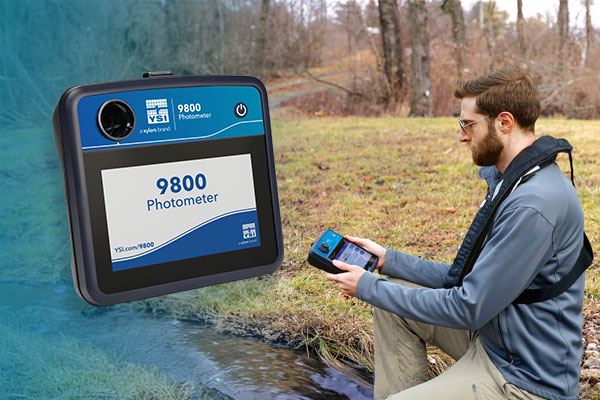
Field photometers analyze small water samples collected by hand, often by adding reagents and inserting the sample into a handheld photometer. These instruments aren’t used directly in the water, so there's a slight delay between sample collection and measurement. Despite that, they greatly expand your field analytical capabilities, with some models like the YSI 9800 supporting over 25 parameters, and the pHotoFlex colorimeter handling up to 135 tests. Because measurements depend on manual sampling, these tools produce discrete datasets based on how frequently you are taking samples (e.g., daily, weekly, etc.).
2. Handheld in-water instruments (spot sampling)
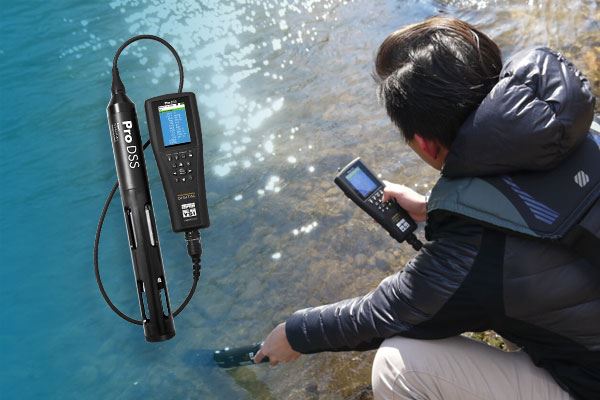
These instruments are used directly in the water for real-time readings and recordings of field water quality parameters. Devices such as the EcoSense, our line of cost-effective handheld and pen-style instruments for basic water quality sampling, or the Pro Series, YSI’s more advanced sampling platform, offer flexibility for various needs. Like photometers, these instruments yield discrete data, meaning you can only collect data during in-person sampling events.
3. Deployable instruments (continuous monitoring)
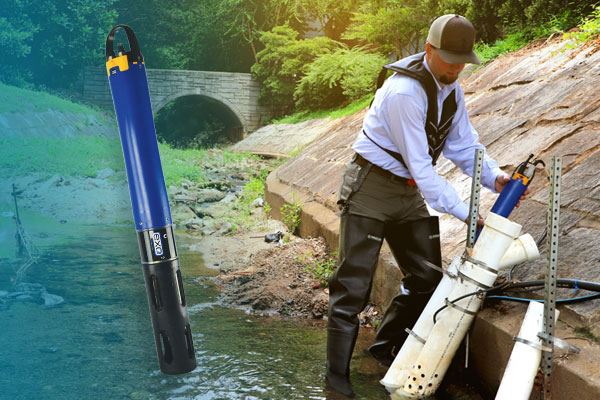
Designed for long-term, autonomous monitoring, deployable instruments like the multi-sensor EXO Sonde are placed in the water to collect data continuously. You can connect the instrument to a datalogger or telemetry to view the data in real-time. Continuous monitoring provides super-granular data by collecting datasets at frequent intervals, down to several samples per second, allowing you to see more details and events over time.
For deep-water marine environments, platforms like the Aanderaa SeaGuard provide stable, rugged solutions capable of enduring extreme conditions and depths. They are also capable of internal data logging or telemetry for real-time data.
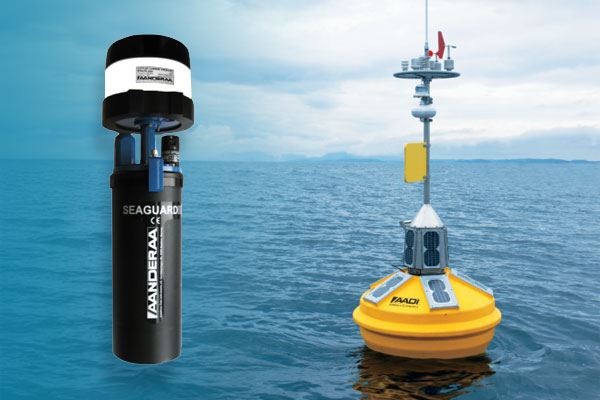
There are five essential questions to consider when selecting the best water quality field instrument:
1) What is your application?
Different monitoring goals will have different priorities. It’s an important first step to establish whether you need an instrument for spot sampling or continuous monitoring. For simplicity, we can think about three categories of applications:
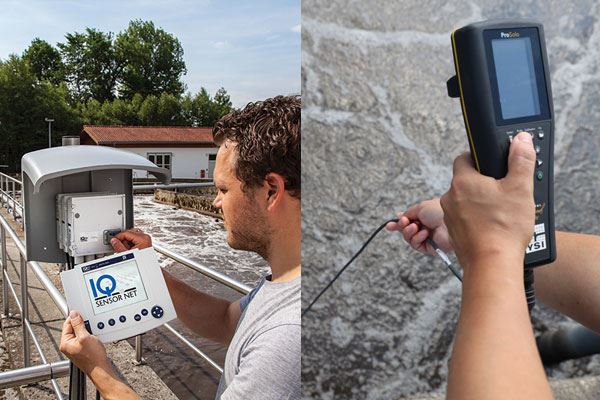
Routine monitoring
This kind of data collection happens on a regular schedule, regardless of the environmental conditions. Routine monitoring is often used in government ambient clean water programs, effluent compliance (whether municipal or industrial), and process monitoring in systems like aquaculture, wastewater treatment, and drinking water facilities.
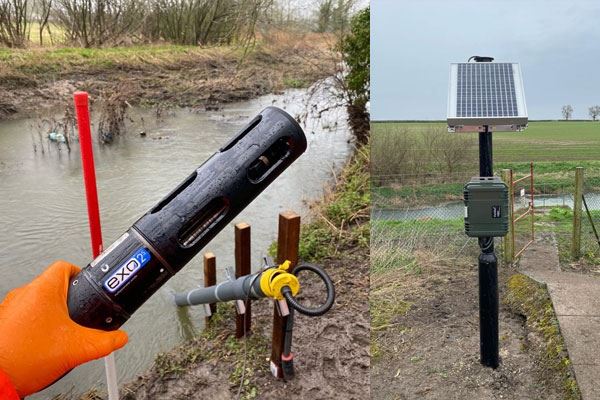
Project-based monitoring
Project-based monitoring occurs based on a project cycle and potentially has defined start and end points. This could be academic research, NGO projects, establishing Total Maximum Daily Loads for EPA Clean Water Act (TMDLs), grant projects, or Best Management Practice (BMP) effectiveness monitoring.
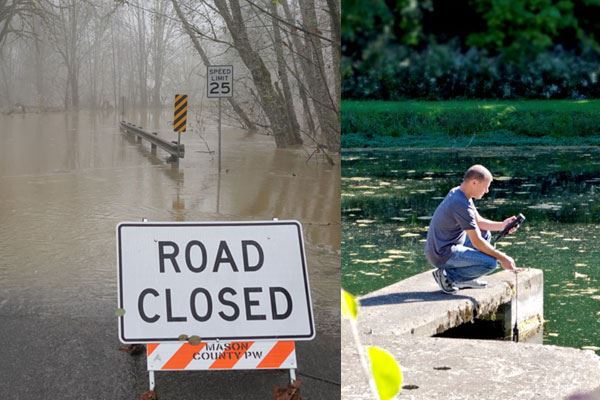
Event or emergency response
This type of monitoring includes immediate detection of contamination or pollution events, monitoring stormwater and flood risks, and other time-sensitive data collection.
Depending on the urgency, duration, and type of monitoring you will be doing, look for key instrument features that will support your goals:
- Sensor Performance: The instrument measurement range, sensitivity, and accuracy should match your specific needs. For example, habitat assessment for sensitive species (e.g., fish larvae or EPT macroinvertebrates) might require a high-performance optical DO sensor, available on the ProDSS or EXO Sonde.
- Rugged Construction: Ruggedness and durable construction are essential for demanding fieldwork, especially in inclement weather or during frequent manual sampling, where your handheld might take a beating. Pro Series handhelds are drop-tested and IP-67 waterproof, meaning they can handle tough conditions and continue working. For extended deployments in harsh environments, ruggedness is even more critical.
- Ease of Use: Your instrument should be easy to use and intuitive for any level of sampler or technician. Handhelds and photometers need to be bright and easy to read, with simple interfaces, and deployable instruments need to make your data easily accessible in field settings.
- Portability: A compact form factor and overall field-readiness are key for both spot sampling and overnight deployments where you swap sites the next day.
- Flexibility: Modularity to change sensors, accessories, and cables as your projects or priorities change, and the ability to collect data using different methods will increase your equipment’s value and the return on your investment, especially for large instrument fleets. Flexibility also means the ability to access your data in different ways, like a handheld display vs. a mobile app for spot sampling, or direct downloads vs. real-time data for continuous monitoring. If you're using existing systems like SCADA or a Data Collection Platform (DCP), you’ll need an instrument that can integrate directly to avoid missing a beat between collecting data and using it to make decisions.
Pro-Tip #1
Consider the frequency, scale, and urgency of your monitoring when selecting an instrument.
2) What parameters do you need to measure?
One of the most basic questions for water quality monitoring, this is important to ask early on in your decision-making process.

Physical parameters
- Temperature
- Turbidity
- Sediments, like Total Suspended Solids (TSS)
- Conductivity, including Total Dissolved Solids (TDS), hardness, and salinity
These are common parameters that many water quality instruments can measure, but not all can measure turbidity. The ProDSS and ProSwap can equip an optical turbidity sensor for handheld measurements, while the EXO Sonde and Aanderaa SeaGuard are options for long-term deployments.
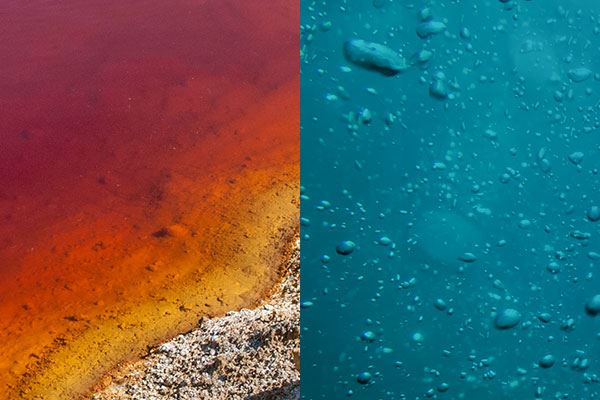
Chemical parameters
- pH, ORP, and Dissolved Oxygen (DO): Common field sensors found on many instruments.
- Nutrients: The 9800 photometer can measure nitrate, phosphate, and potassium. The EXO NitraLED optical sensor is ideal for long-term nitrate monitoring.
- Indicators of anthropogenic activity, such as bromine and cyanuric acid, typically found in industrial or municipal wastewater, require a photometer. Chloride is available as an ion-selective electrode for both handheld and deployed instruments.
- Colored Dissolved Organic Matter (cDOM): Measured with a fluorescence sensor like the EXO fDOM, which targets the fluorescent fraction of DOM.
- Biochemical and Chemical Oxygen Demand (BOD and COD): Key parameters for ecosystem health and water treatment. BOD is measured using the Pro Series lab ProOBOD probe, while COD can be measured with the pHotoFlex colorimeter.
- Metals (e.g., iron and copper): Require a photometer for field measurements.
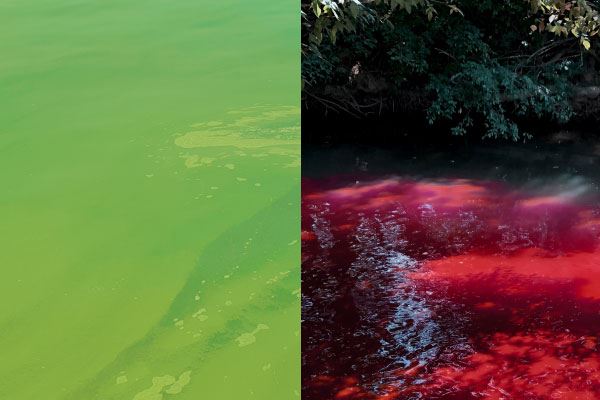
Biological parameters
- Algal pigments (chlorophyll, phycocyanin, phycoerythrin): Available in the Total Algae sensor on the EXO Sonde or ProDSS.
Rhodamine WT, a red fluorescent dye used in tracer studies and residence time investigations, can also be detected with the EXO Rhodamine sensor.
Many parameters still require lab analysis. Most heavy metals need spectrophotometry or portable X-ray fluorescence (XRF). Emerging contaminants (PFAS, microplastics, pharmaceuticals), Total Coliforms, E. coli, and Total Organic Carbon (OI Analytical 1080 TOC analyzer) also require lab methods.
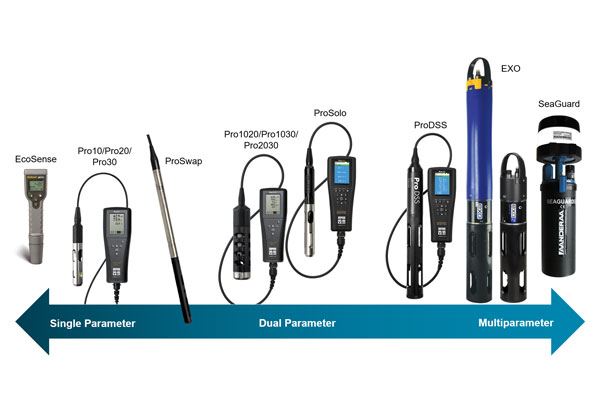
You’ll need an instrument that can measure both your current and future parameters. Photometers and colorimeters offer the widest range, while handheld and deployable instruments vary from single-parameter (e.g., EcoSense pH100A, Pro10), to dual sensor (e.g., Pro2030), to multi-sensor (e.g., ProQuatro, ProDSS, EXO Sonde, SeaGuard).
Sensor flexibility, or the ability to swap your installed sensors, is key for changing sites or projects. Anti-fouling is also critical for turbidity and optical sensors, where sediment, debris, biofouling, and bubbles can severely impact data quality and accuracy. Use a strong wiper like the EXO Central Wiper for accurate data during deployments.
Pro-Tip #2
Identify key parameters now and for the future to guide your instrument choice and future-proof your investment.
3) What are the environmental challenges?
Environmental conditions play a big role in instrument selection. If your environment experiences extreme heat, cold, or fluctuating temperatures, like hot springs or icy waters, choose instruments and sensors built for ruggedness and durability. High build quality protects sensitive components and ensures performance in extreme conditions.
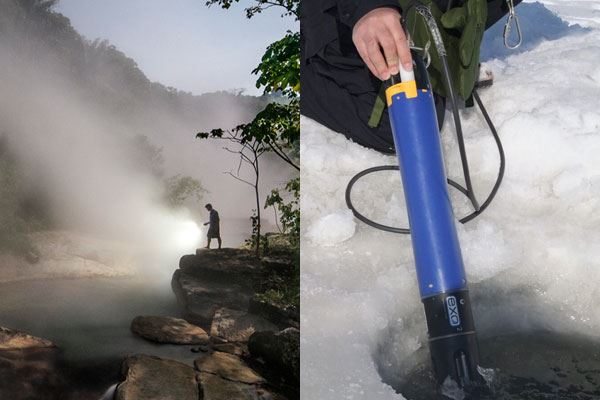
Left photo credit: Delvin Gandy
Corrosivity, due to high salinity or low pH, can accelerate metal corrosion. Hyper-salinity in marine environments and chemically treated water (like acid-mine drainage) are examples of this. Look for corrosion-resistant materials like high-impact plastics and titanium, such as those used in the ProDSS and EXO Sonde.
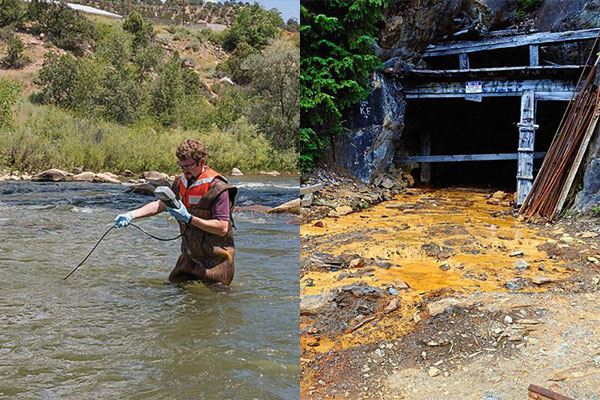
High sediment loads in your water, indicated by increased suspended solids, organic matter, and turbidity, can also be rough on your instrument, both by causing physical damage when it builds up and by interfering with sensor measurements.
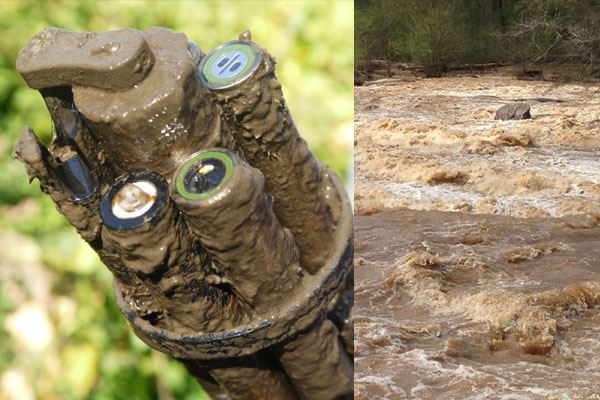
High pressure at depth can cause water intrusion and damage the internals if your instrument is not rated for the required depth. This is going to be a concern for deep-water marine applications as well as lake and reservoir profiling. Ion Selective Electrodes like nitrate, chloride, and ammonium on the ProDSS and EXO are limited to about 15 meters due to pressure-sensitive membranes. For high-pressure environments, prioritize well-built systems with the pressure or depth rating you need.
Water movement affects sensor performance: standing water impairs membrane DO sensors, eddies and backflow can cause non-representative data, and bubbles affect optical sensors. Use technologies suited to these challenges, like optical DO for stagnant water.
Debris and biofouling can occlude sensors or dislodge installed instruments leading to equipment loss. Anti-fouling features like the EXO Central Wiper and copper Anti-fouling Guard can help handle the physical conditions of your site. Site setup also matters—install in PVC pipe, anchor securely, and avoid problematic flow areas.
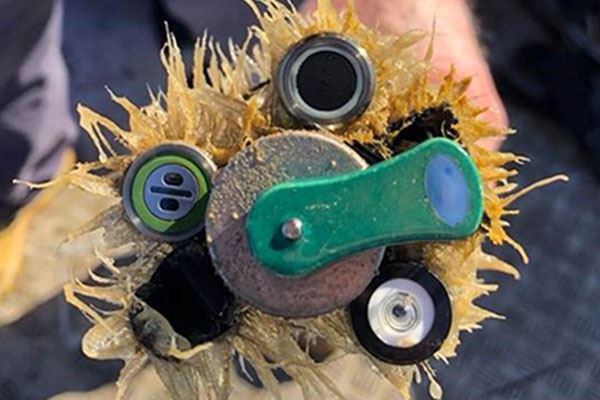
Site location introduces its own challenges. Consider safety, accessibility, and power availability. Flexibility is key: for spot sampling, consider cable lengths for shore or boat access as well as vehicle-based surveys. For continuous monitoring, consider fixed vs. floating deployments, and internal logging vs. wired communication or telemetry. For remote sites, choose systems with long battery life or external power options, and ensure telemetry compatibility.
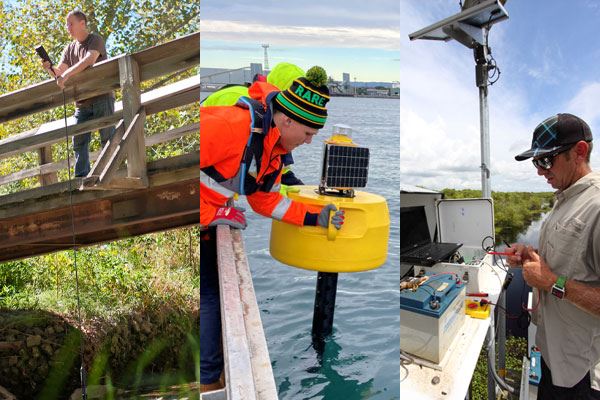
Pro-Tip #3
Choose instruments built for your environmental conditions: rugged, waterproof, corrosion-resistant, and flexible enough to work for your site.
4) What are your data requirements?
It is important to consider your data requirements and whether you need specific quality measures or delivery methods. High-performance instruments are essential when regulations or scientific research require reliable, repeatable data. Some monitoring goals, like compliance and water quality standard monitoring, have more stringent data requirements.
Key instrument and sensor specifications to consider include:
- Accuracy: How close the measurement is to the true value (e.g., ±1%)
- Precision: Repeatability under consistent conditions, influenced by calibration and sensor quality
- Range: Minimum to maximum detection limits
- Sensitivity or Resolution: Smallest measurable increment (e.g., 0.01 mg/L)
- Response Time: Time to reach a stable measurement (e.g., T95 indicates the time to reach 95% of a known stimulus value)

Additionally, your instrument should either integrate with your existing data flow or enhance your efficiency. For example, if you require digital calibration, maintenance, and data records for quality assurance, also known as Good Laboratory Practice, look for an instrument that has record retention and easy download features. You might also need your instrument to support digital logging, downloads to a PC, and easy database import.
For spot sampling, your instrument should be easy to use in the field. Mobile apps like Kor Mobile can replace handhelds for convenience.
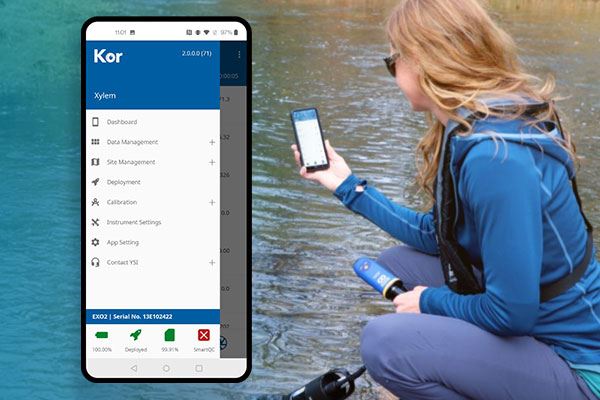
To transition from manual to remote monitoring, your instrument needs signal output options for SCADA or DCPs. EXO Sondes support various outputs and can connect directly to telemetry networks for real-time data access. This flexibility allows integration into existing networks or the setup of a new one, making remote, real-time monitoring a major upgrade over manual data collection.
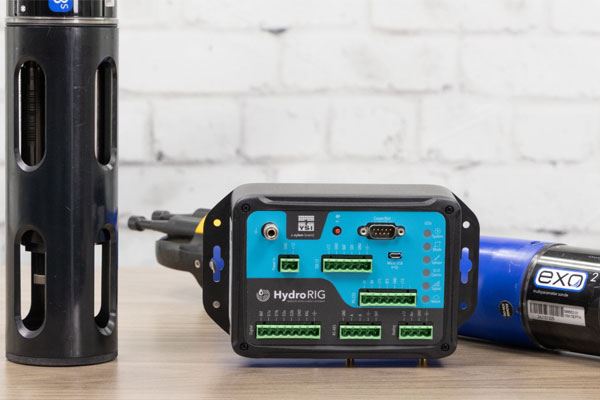
An instrument that communicates directly with a remote platform simplifies real-time access. IoT devices like the HydroRIG remote intelligent gateway streamline the process with built-in settings requiring no data logger or modem configuration. It connects directly to EXO Sondes, SDI-12 devices, and other sensors without a signal output adapter, instantly linking your environmental sensors to HydroSphere for easy data viewing and sharing.
Pro-Tip #4
Match your data requirements to the instrument’s specs, record-keeping, and data transfer abilities.
5) What is your budget and maintenance capability?
Cost will more than likely play a role in deciding your instrument, but the true cost of environmental monitoring goes way beyond equipment costs. People and time are almost always the major factors in a budget, and the most important end results are data quality and ease of use.
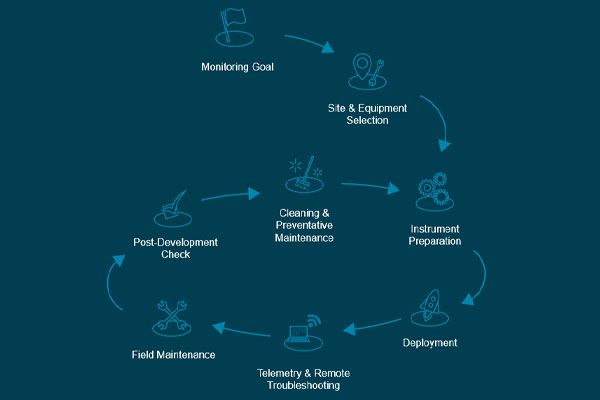
In addition to the up-front costs, field instruments have long-term operational costs and require routine maintenance, known as the total cost of ownership. This includes travel to the field site to collect data or perform site maintenance—staff time, gas, and vehicle use, repairs to the instrument and diagnostic service costs, consumables, calibration costs, data software or communications costs, and team training to ensure data is being collected properly. Note that you’ll multiply these costs by the frequency of your instrument and site maintenance to understand the total cost of ownership.
There’s often a trade-off between cost and precision— you get what you pay for. More accurate, reliable instruments with state-of-the-art technology typically cost more, but better technology means better data. The real value of an instrument includes not just features and efficiency, but also the reliability it offers. Frequent repairs, replacement costs, and lost data can quickly outweigh upfront savings.
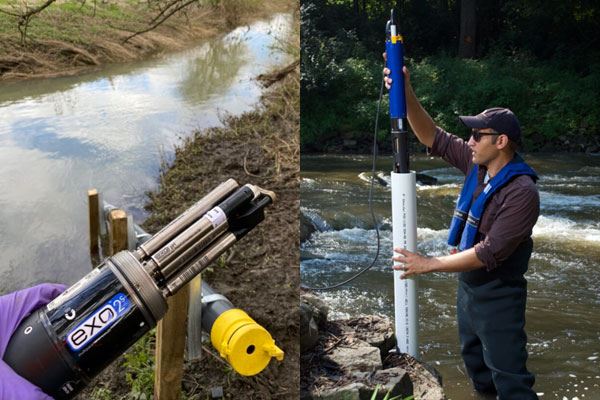
That’s why the top feature you need to support your budget is reliability. Instruments built and tested for the field offer longevity and peace of mind. Of all the things that can go wrong during deployment, you should be able to trust that your handheld or deployed sonde won’t be the failure point.
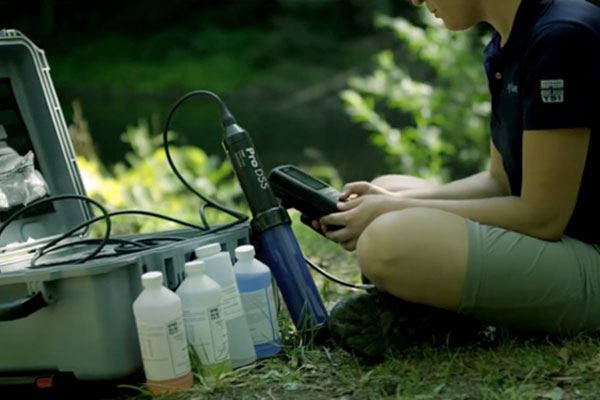
While factory calibration and repair services are convenient, user-maintained instruments offer significant advantages. Modular, serviceable designs let you perform calibrations and basic repairs yourself, reducing downtime and keeping control in your hands. Staying on top of calibrations also gives you a better understanding of your data. Still, annual or semi-annual factory maintenance is important to keep any instrument in good working order.
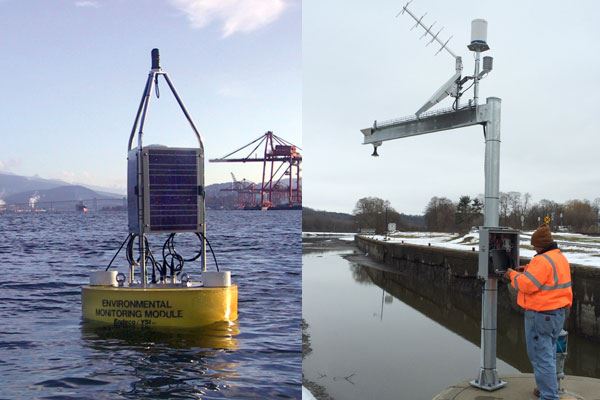
Another feature to consider includes upgrading from manual to autonomous data collection, which saves field time and travel costs. Although there are ongoing site maintenance costs, high-quality equipment reduces service frequency and collects far more data than manual methods. Deployable instruments offer higher value based on the volume and quality of data they deliver.
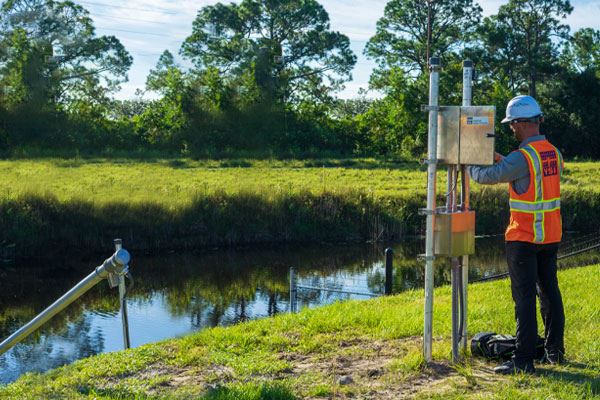
If deployable equipment isn't ideal or in budget, working with YSI Field Services is a great alternative. With Data as a Service, our professional team handles everything, including site design, installation, calibration, maintenance, field training, and full network management, delivering the data you need without the hands-on burden.
Pro-Tip #5
Factor in not just the purchase price, but the total cost of ownership. Prioritize reliability to avoid replacing your instrument prematurely.
Asking these five questions can help you understand the instrument features that are most important for your monitoring program. Selecting the right instrument not only protects your investment, but also improves efficiency, reduces failures and data gaps, and ensures high-quality data.
If you need further assistance selecting your water quality instrument, please see the resources below:
Pro Series Selector Tool
Video: Selecting Your YSI Pro Series System
EXO Sonde Selector Tool
Video: EXO Sonde Overview
Floating Platform Selector Tool
You can also set up a consultation with one of our experts or reach out to us directly at ysi.info@xylem.com or +1 (937) 767-7241
